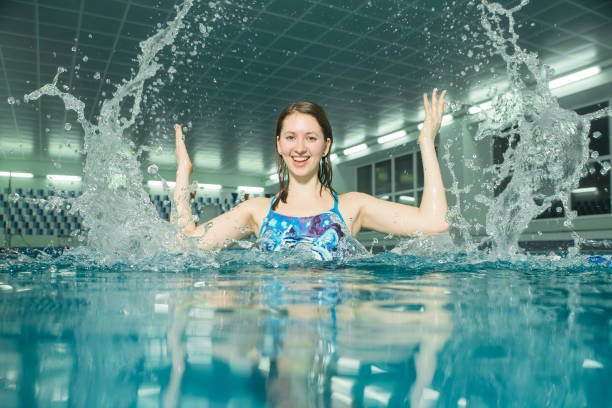One enthralling and energizing pastime is winter swimming. During the colder months, it entails swimming in frigid water. Many people appreciate the health benefits and thrill it offers. Swimming outdoors in winter, nevertheless, is dangerous and taxing. It is hard with snow, ice, and a biting wind. This is why indoor waters present a viable alternative. They let you enjoy the excitement of winter swimming without the harsh temperatures. This piece explores how you can enjoy and safely engage in indoor winter swimming.
Why Winter Swimming Is Preferred
Global demand for winter swimming has increased. Its special advantages are well known. Many swimmers claim it raises their energy and mood. The body and mind are shocked by cold water, hence generating a cooling effect. It also boosts circulation and reinforces the immune system. Some swimmers maintain that it reduces anxiety and stress. Winter swimming stands apart for all of these justifications.
Indoor Waters: Safe Winter Option
There are hazards involved in winter outdoor swimming. Ice can be deadly. Wind chill helps cold water seem even more frigid. These factors could cause accidents or hypothermia. Indoor water eliminates these hazards; heated surrounds keep you warm before and after swimming. Typically colder than conventional pools but safe for brief exposures, indoor pools often have regulated water temperatures. This managed setting lets you safely enjoy cold water. It’s an ideal approach to experience the rush of winter swimming free from anxiety.
Which inside waters are appropriate?
There are several sorts of indoor waters appropriate for winter swimming training:
- Cold plunge pools are often found inside wellness centers or gyms.
- Indoor swimming pools with configurable cold water settings.
- Therapy pools are created for cold water treatments.
- Wellness spas offer cold water pools, hot tubs, and saunas.
Every kind has advantages. Perfect for short swims, cold plunge pools are little but extremely cold. Temperature control in indoor pools allows you to swim longer and more freely. Therapy pools provide professional help and monitoring. By combining cold and warm features, wellness spas offer a balanced experience.
Getting Ready for Indoor Winter Swimming
Good and safe indoor winter swimming depends on preparation. Simple steps follow:
- Begin by warming up your body to prevent shocks. Some mild stretching or exercises are helpful.
- Wear the appropriate swimsuit or wetsuit made for chilly water.
- Beginners should first restrict their time spent in cold water.
- Have apparel and a warm towel ready for after the dip.
- To keep hydrated, drink water but abstain from alcohol.
Preparing guarantees you have the best risk-free experience possible.
Who is Qualified to Try Indoor Winter Swimming?
Indoor winter swimming is suitable for almost anyone in relatively good health. Anyone with heart problems or breathing issues, meanwhile, should first see a doctor. Children and seniors should take extra care. Under supervision, novices should begin gently. This is when American lifeguard certifications in cold water rescue and instruction come in useful. Instruction from trained lifeguards guarantees safety.
Tips for Enjoying Winter Swimming Indoors
Here are some guidelines to guarantee the enjoyment and safety of your indoor winter swimming:
- Always swim under supervision or with a friend.
- Understand your boundaries and avoid excessive activity.
- Before and after your swim, warm up.
- Use neoprene caps or gloves if required to swim in cold water.
- Pay attention to your body. Get out immediately if you feel pain, dizziness, or numbness.
- Keep a good attitude to savor the thrill of chilly water.
Merging Winter Swimming with Other Fitness Pursuits
Often combining cold water pools with other health modalities, indoor wellness facilities are a popular choice. Some nearby offer saunas or hot tubs, for instance. Called contrast therapy, alternating between hot and cold water can improve relaxation and blood flow. Often complementing cold water treatment as well are yoga and meditation classes. This all-natural method turns winter swimming into not just pleasurable but also a component of a more comprehensive health regimen.
The Role of Lifeguards in Indoor Winter Swimming
Making indoor winter swimming safe depends greatly on lifeguards. Identifying cold water risks, performing cold water rescues, and administering first aid are among the skills they are trained to provide. Usually, cold plunge or therapy pools require qualified lifeguards to be present. Classes for lifeguards available close by will show you how to prepare for emergencies. Anyone wishing to work or volunteer at water installations should benefit from lifeguard certification.
Beginning Your Indoor Winter Swimming Path
Beginning your indoor winter swimming trip is far simpler than you might imagine. Start by looking for neighborhood fitness facilities or well-being clubs with cold water pools. Visit these locations to view their safety precautions and facilities. Enquire about introductory programs or cold water swimming sessions. Enroll in American lifeguard training courses to boost your confidence. This will help you to develop your water safety skills and prepare you for crises.
Last Thoughts on Indoor Winter Swimming
With fewer hazards, indoor waters offer excellent opportunities to savor the excitement of winter swimming. Comfortable and secure, you can feel the rush of cold water. Indoor winter swimming can be a fun and healthful pastime with appropriate planning and safety. If you wish to improve your abilities, remember to study safety and consider getting a lifeguard certification. The American Lifeguard Association supports these standards and supplies functional materials for secure swimming environments.
Indoor winter swimming provides enjoyment and challenges. Dive in gently and relish the special excitement of chilly water all year long.


